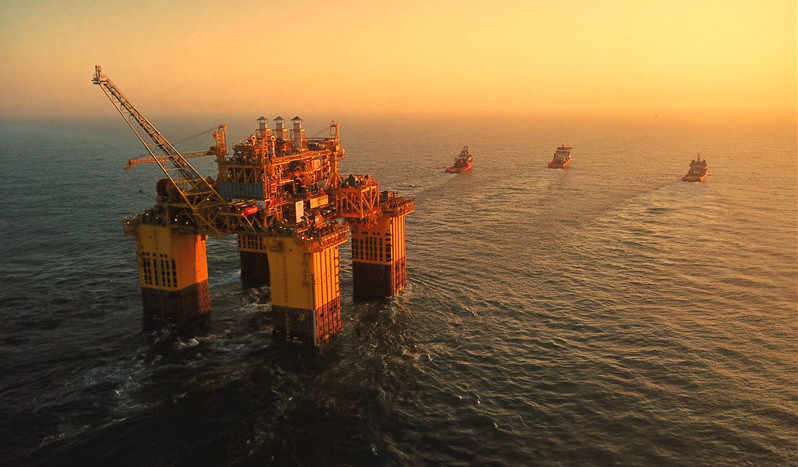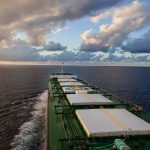In the 1980s and early 1990s, the world’s merchant fleet lost 130 bulk carriers, in some tragic cases with all hands. When asked why, the philosophical answer was often “because the safety culture in the marine transport industry is reactive, slow and delayed”.
The speed of response often depends directly on the pressure that results from these losses and the public perception of them. In the case of tanker accidents, images of oil-drenched seabirds trigger public outcry which greatly increases the pressure to act. After the MSC Zoe accident, pictures of lost cargo at sea caused the flag states of the Netherlands and Germany to spring into action. In cooperation with Australia – which at that time was dealing with a cargo loss from the APL London in its waters – a Joint Industry Project (JIP) called “Top Tier” was established. By contrast, the much greater cargo losses of more than 3,000 containers, in the northern Pacific in the winter of 2020 / 2021 were barely noticed by the public as few felt themselves to be personally affected.
However, the interest of the marine insurers was immediately aroused because, on the one hand, it is they who pay for the cargo loss and, on the other, these incidents represented the greatest cargo loss from ships in 15 years. Underwriters were not dealing with a loss of cargo from a single ship but with a series of accidents on large container ships. Did this string of accidents point to structural problems or inadequacies, or had the sea simply become hungrier due to climate change? Top Tier was set up to find the causes and propose possible solutions.
How could things get so bad?
Containership development has moved at a dizzying speed. In less than 50 years, cargo capacity has increased by a factor of 24, with the greatest progress occurring during the last 15 years. Despite all the technical resources available, development still involved a measure of trial and error. Initially the ships tended to be prone to hogging due to problems of longitudinal strength caused by a need for vast quantities of ballast water as the vessels themselves did not possess sufficient stability. This problem was solved with the arrival of the wider Post-Panamax vessels but they had problems of their own. The stability, which had been inadequate in the narrower ships, was now too great. In particular when carrying partial loads in coastal waters, problems could arise at GM values of over 10m, as has been confirmed by reports of extreme rolling motions.
As the size of the ships increased, so too did the height of the deck cargo: Simple stacks of five or six units became container towers of up to 13 superimposed units. Because the sheer size of the vessels appeared to confer greater security regarding stability, the requirements placed on the lashing systems were actually reduced around the year 2010. A somewhat laissez-faire attitude towards container weights and container stowage positions on board had also become commonplace.
Earlier general cargo vessels had cargo stowed below deck where it was enclosed, tightly stored, lashed down and protected. Deck cargo was frowned upon and something of a rarity, and in cases where it was used, high premiums were demanded because the risk was clearly fundamentally different. Nowadays, containerships transport up to 60% of their cargo on deck. Consequently, the ship no longer gives cargo the same protection as in the past. This task has to be performed by the container which is primarily stowed and secured at inland locations.
Even though many parameters had shifted in ways that were not conducive to safety, container losses at sea were not unusually high because the ships were never 100% loaded; and the cargo securing systems were generally over-specified and able to compensate for safety shortfalls. This all changed in the winter of 2020 / 2021 due to the economic recovery in China. In just a matter of weeks, shipping space became scarce and every last stowage slot was taken. As a result, no reserve was maintained and the extreme storms of that winter laid the problems bare. The sea has not become hungrier for ships and their cargoes, even under the impact of climate change; however, it does not forgive all human mistakes.
Top Tier is examining the causes and IUMI’s Loss Prevention Committee is represented by the German Association. Hendrike Kühl from the IUMI Secretariat is also included as the results will be made available to IMO together with the corresponding recommendations.
IUMI has taken on a new appearance over the last 10 years; it has become a much more vocal association whose opinions are sought and whose voice counts. This gives our members the opportunity to arrive at a position and advocate this in the light of our collective knowledge and experience. We have the responsibility and duty to constantly make a ourselves heard and we are moving rapidly from being spectators to actors, not only on the issue of lost containers.
Source: Hellenic Shipping News





